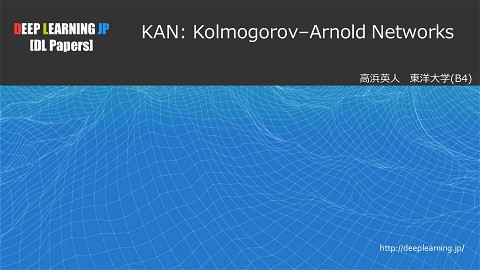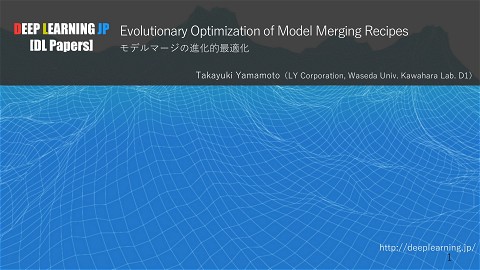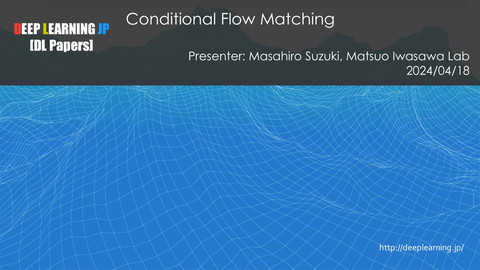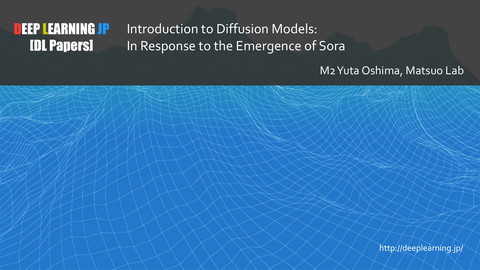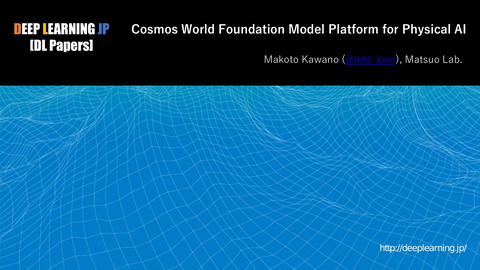[DL輪読会]Theoretical Impediments to Machine Learning With Seven Sparks from the Causal Revolution
>100 Views
January 26, 18
スライド概要
2018/1/26
Deep Learning JP:
http://deeplearning.jp/seminar-2/
DL輪読会資料
関連スライド
各ページのテキスト
Theoretical Impediments to Machine Learning With Seven Sparks from the Causal Revolution Judea Pearl 1
¤ Pearl AI ¤ 2018/1/11 arXiv ¤ Judea Pearl ¤ ”One of the giants in the field of artificial intelligence" by Prof. Richard Korf ¤ ¤ ¤ ¤ ¤ ¤ DL +DL ¤ 2
¤ ¤ AI Pearl 3
≠ ⇒ 1 ¤ ¤ ⇒AI 4
AI ¤ ¤ ¤ ¤ 1000 ⇒ 5
¤ ⇒ ¤ What if ? ¤ 6
Pearl ¤ ¤ 20 ¤ AI 7
3 The Three Layer Causal Hierarchy Level (Symbol) 1. Association P (y|x) Typical Activity Seeing Typical Questions Examples What is? How would seeing X change my belief inY ? 2. Intervention P (y|do(x), z) Doing Intervening What if? What if I do X? 3. Counterfactuals P (yx |x′ , y ′ ) Imagining, Retrospection Why? Was it X that caused Y ? What if I had acted differently? What does a symptom tell me about a disease? What does a survey tell us about the election results? What if I take aspirin, will my headache be cured? What if we ban cigarettes? Was it the aspirin that stopped my headache? Would Kennedy be alive had Oswald not shot him? What if I had not been smoking the past 2 years? ¤ Figure 1: The Causal Hierarchy. Questions at level i can only be answered if information from level i or higher is available. ¤ An extremely useful insight unveiled by the logic of causal reasoning is the existence of a sharp 8
association !(#|%) x ¤ 3 y 1 ¤ ¤ ¤ ¤ X Y ¤ ¤ 2 9
intervention do !(#|%& ' , )) X=x Z=z y ¤ ¤ ¤ ¤ ¤ ¤ ¤ ¤ 10
Counterfactuals !(#$ |& ' , # ' ) * &' + #' X x Y=y ¤ 3 ¤ ¤ ¤ ¤ ¤ ¤ 11
¤ 1 ¤ ¤ ¤ ⇒ ¤ 3 1 12
5 ¤ ¤ ¤ ¤ ¤ ¤ ¤ ¤ ¤ ¤ Pearl 13
¤ ¤ ¤ ¤ Garry King [Morgan+ 15] “More has been learned about causal inference in the last few decades than the sum total of everything that had been learned about it in all prior recorded history” ¤ Pearl The Causal Revolution [Pearl+ 18] Structural Causal Models SCM 14
SCM ¤ 1. 2. 3. 3 ¤ ¤ ¤ 2 15
The SCM deploys three parts 1. Graphical models, SCM 2. Structural equations, and 3. Counterfactual and interventional logic ¤ Graphical Assumption models serve asQuery a language for representing what we know about the world, counterfactuals help us to articulate what we want to know, while structural equations serve to tie the two together in a solid ¤ semantics. Estimand ¤ SCM Estimate Fit Inputs Outputs Query Estimand (Recipe for answering the query) ES Assumptions (Graphical model) Estimate (Answer to query) ES Data Fit Indices F 7 Figure 2: How the SCM “inference engine” combines data with causal model (or assumptions) to produce answers to queries of interest. 16
Assumptions Assumption ¤ ¤ ¤ ¤ ¤ ¤ ¤ d¤ 17
Do ¤ 2 z x y ¤ ¤ do 18
¤ ¤ ¤ ¤ ¤ ¤ 19
¤ z ⇒ x y ¤ ¤ ¤ X Y Z 20
¤ ¤ ¤ ¤ ¤ ¤ 1 Pearl ¤ Do ¤ non-representative samples 21
¤ ¤ ¤ ¤ 22
¤ D⇒ 23
¤ ¤ SCM ¤ ⇒ AI ¤ ¤ ¤ 24
AI ¤ = ¤ ¤ Friston ¤ ¤ VAE ¤ ¤ Deep Kalman Filter[Krishnan+ 15, 16] ¤ 25

